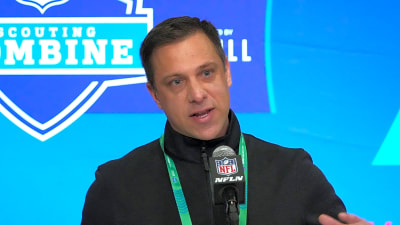
If your lawn struggles with compacted soil, patchy grass, or poor drainage, lawn care experts also point to aeration as the best solution. While traditional core aeration involves removing plugs of soil to improve airflow and water absorption, some pros tout a liquid aeration treatment as a no-mess alternative. But how does it compare to core aeration, and is it the right choice for your lawn?
What is liquid aeration?
This aeration method uses a liquid solution that creates microscopic holes to loosen the soil surface and creates air pockets amongst dense soil particles. Some brands use an active ingredient called ammonium lauryl sulfate while others use a natural solution containing humic acid. Both aeration mixtures relieve soil compaction and help break down organic materials like thatch buildup which allows vital nutrients to reach grass roots.
Benefits of liquid aeration for lawns
- Improves soil structure without disturbing grass
- Enhances water retention capabilities and reduces runoff
- Can break down thatch build-up
- Encourages deeper root growth for healthier turf
- Covers the entire lawn evenly and easily
- Can be applied any time during the growing season
- Encourages microbiological activity for long-term benefits.
Liquid Aeration vs. Core Aeration: Which Is Best for Your Lawn?
Liquid aeration and mechanical aeration each have their strengths and weaknesses. A liquid solution does not physically disturb the lawn and can be sprayed on hard-to-reach areas. It can soak in up to 10 inches deep where it can stimulate deep microbial activity and increase essential nutrients needed for a healthy lawn. Liquid aeration works best for sandy or mildly compacted soil, but takes time to take effect.
Core aerators provide immediate relief for compacted lawns by removing plugs of dirt which gives grass roots direct access to water and air. Removing cores is best for severe compaction and heavy clay soil; however, unless you rent equipment, it often requires a professional lawn care service and it can leave unsightly soil plugs on the lawn that take time to fill in. These soil cores will only be as deep as the aeration machine can reach, generally 3 inches at most. It can create a beautiful lawn but it's often temporary since it doesn't directly improve soil health.
How to Apply Liquid Aeration to Your Lawn
You'll Need:
- Liquid aeration product (with humic acid, surfactants, or microbial boosters)
- Hose-end sprayer or garden pump sprayer (for even application)
- Protective gloves (to avoid skin irritation)
- Eye protection (especially if using a concentrated formula)
- Water source (for mixing and post-application soaking)
- Lawn mower (to cut grass before application)
- Rake or dethatcher (to remove excess debris)
1. Prepare Your Lawn
- Mow the grass to a normal height.
- Remove excess debris so the liquid product reaches the soil surface.
- Water the lawn a day before applying if the soil is dry.
2. Choose the Right Liquid Aerator
- Look for products with humic acid, soil surfactants, or microbial boosters.
- Check the label for coverage recommendations based on lawn size.
3. Apply the Solution
- Use a hose-end sprayer or mix in a garden sprayer according to instructions.
- Walk at a steady pace, applying evenly across the lawn.
- Avoid applying before heavy rain to prevent runoff.
4. Water the Lawn After Application
- Lightly water the lawn to help the solution soak into the soil.
- Avoid heavy foot traffic for 24 hours.
5. Repeat as Needed
- Apply additional treatments every 4-6 weeks during the growing season for best results.
- Combine with organic matter or compost to increase beneficial microbes improve long-term soil health.
FAQ
Are Liquid Aeration Solutions Safe for Pets and Kids?
Most organic liquid aerators are safe once dry, but check the product label. Some chemical formulas may require a waiting period before re-entering the lawn. If used on hard-packed clay soil, it will take longer to absorb.
When Should I Apply Liquid Aerators?
To take advantage of soil conditions, apply it during active growing seasons—late spring and early fall—when grass is healthy and soil microbes are at their peak. Avoid applying it during extreme heat or drought, as dry soil won’t absorb the solution well. Also, don’t apply it right before heavy rain, as excess water can wash it away before it has a chance to soak in.
How long does it take to see results from liquid lawn aeration?
You should see a healthier lawn in 45-60 days as it takes time for soil structure to improve. Grass roots will gradually grow deeper, and drainage may improve within one or two applications, but to see new grass growth or for unhealthy grass to perk up, it can take up to a month given otherwise good weather conditions.
More must-reads:
- Details emerge on crash that killed ex-NASCAR driver Greg Biffle
- Los Angeles Dodgers' latest World Series championship comes with staggering luxury-tax bill, nearly doubles next-highest team
- The 'Most multi-rushing-TD NFL games' quiz
Breaking News
Trending News
Customize Your Newsletter
 +
+
Get the latest news and rumors, customized to your favorite sports and teams. Emailed daily. Always free!








